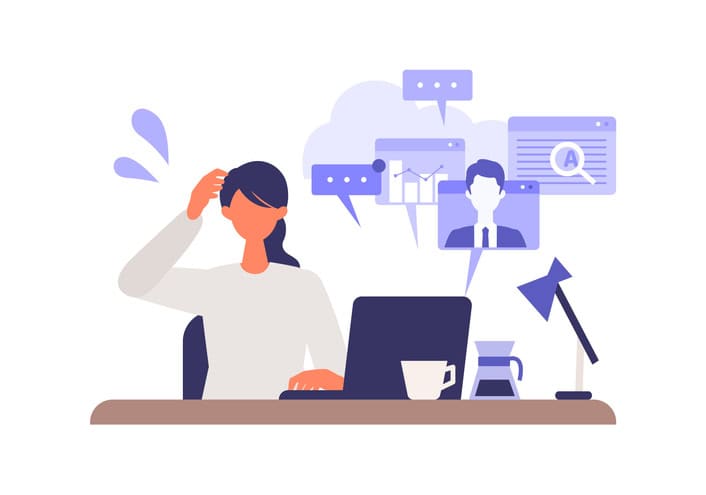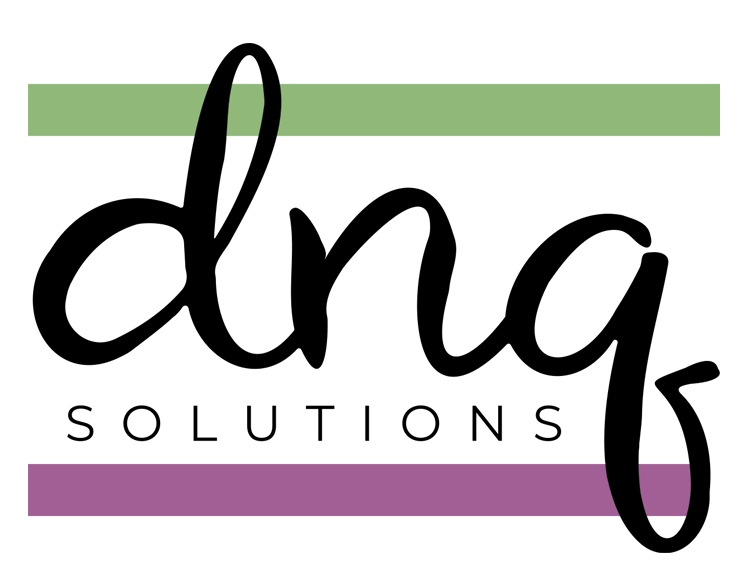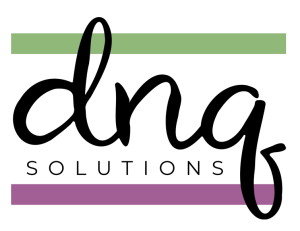
Everyone wants to be more productive. We want to get more done in less time, so we multi-task. But do we really get more done when we’re multi-tasking? When we’re busy doing so many things, do we truly accomplish more?
We like to think that we can do multiple things at once. Multi-tasking has become a buzz phrase of sorts but are you really more productive when you multi-task? Research says that you are not.
This article from the Cleveland Clinic in March 2021 reports that multi-tasking can reduce our ability to focus intently on one task and our ability to learn. That’s a scary thought. This article says that we’re not truly multi-tasking, we are task-switching. Switching our attention from one task to another and back again.
This is not productive because it takes time for the brain to move back and forth between tasks.
Here’s a possible scenario:
You are driving the car, listening to the radio, following GPS directions, and talking to a friend what is your brain paying the most attention to?
If your friend tells you something scandalous, what are you paying attention to? The cars around you, the signs on the road, other things like debris, a pedestrian, or a bicyclist? My guess is that you tune more closely into what your friend is talking about because it is more interesting than the things around you.
When you’re paying attention to your friend, you are not paying attention to the road and that’s when mistakes happen. It can be a small thing like missing your exit, or a big mistake like not checking your side mirror when you change lanes and narrowly missing another car.
Here’s another possible scenario:
Once again you are on the phone listening to your boss talk. He always talks a lot so instead of giving him your full attention you decide to be more productive while he is talking. You have a lot of emails in your inbox which need attention. So, you decide to delete some emails and respond to others while he is yammering on.
He talks on and on requiring you to just say things like ‘uh huh or oh’ periodically. Finally, he says something like ‘I’m sure you’ll do a great job on this report’. Now, panic sets in because you have no idea what the report is supposed to be about. You were not really listening. Your attention was primarily focused on the emails you were deleting and responding to. What are you going to do now?
You can see from these simple scenarios how easy it is to process the wrong information when your brain is not attending to the task at hand. Multi-tasking does not enable you to be more productive.
So, what’s a person to do to be more productive with the time available?
Recently, I took a class presented by Carolyn Caldwell on Time Management and Productivity through the Institute for Challenging Disorganization. Carolyn proposed that to be more productive in the time available we engage in task-layering.
How is task layering different from multi-tasking?
Task-layering is different from multi-tasking because you intentionally group tasks that require little or no focus with 1 task that requires your attention. Doing this means that you are giving your brain permission to pay attention and truly focus on only 1 thing for a set amount of time.
Some examples:
For instance, you can study for a test while the laundry is in the washer. Another example is answering email, listening to familiar music, and baking a cake.
If you are baking a cake, you set the timer for the 30-minutes that the cake is baking and then can focus for that length of time on answering email. You can even have music on in the background. When the timer goes off, you take the cake out of the oven, and go do something else.
Understand that when you engage in task-layering you are not trying to do more than 1 thing at a time. You may have something else happening, but you are giving your full attention to just 1 task.
Let’s review
When you say you are multi-tasking you are not doing multiple things at once, you are switching between multiple tasks which can cause you to make mistakes. Another problem with task-switching is that when you do this repeatedly your brain can lose the ability to focus intently.
Task-layering involves selecting 1 task on which to focus intently while letting other things happen in the background that do not require your attention.
If you want to be more productive, try task-layering. Decide what can happen in the background while you focus your attention on 1 task. You will be surprised by how much more productive you can be when you give your complete attention to one important task at a time.
Diane N. Quintana is a Certified Professional Organizer® ,a Certified Professional Organizer in Chronic Disorganization®, Master Trainer and owner of DNQ Solutions, LLC and co-owner of Release●Repurpose●Reorganize, LLC based in Atlanta, Georgia. Contact Diane for a complimentary phone consultation.


I love how you’ve presented task-layering. I’m stringent about not multitasking when any one of the tasks is important (like your driving/boss convo examples), though I do tend to multi-task when I’m doing multiple unimportant things, like simultaneously listening to the news, eating, and flipping through Twitter. (Some people would say focusing on one’s meal is important, I’m not getting any joy out of eating my veggies.)
Task layering is much more in line with the way I achieve efficiency. You’ve positioned it as doing one thing passively (“baking” the cake when it’s in the oven) and one thing actively; for me, it’s listening to webinars/podcasts while walking and getting my 10,000 steps or, as you note, while doing laundry. Neither walking nor laundry require my active intellect; walking or folding towels can be automatic. I couldn’t cook or measure ingredients while listening; I know that when I’m grocery shopping, I can get things from my list while simultaneously talking on my cell, but I can’t make a judgment (which cheese? which price is better?) and have that convo. With switch tasking, we can only *really* do one thing that requires cognition; that’s why we have to turn the radio down when we’re looking for an address as we drive.
Thanks for presenting us with this concept and definition.
This is an intriguing concept, Diane and I love the name. For many of my clients, this would be an interesting challenge to see if they could stay focused on the main task and truly let the background tasks hum along, or whether they would be tempted to switch focuses along the way. On my best days, I’m able to task-layer, but sometimes I just need to block EVERYTHING out so I can focus.
I love the idea of task-layering. I like doing this when I exercise. While exercising, I listen to an organizing or self-help book on Audible for inspiration and ideas. When my kids were little, my daughter would have several hours of dance. While I was waiting for her, I would sit and wrote posts, schedule with clients and work on other business tasks. So, when she was finished, I was finished too. It allowed me to be present and not think of work when we went home.
I love learning something new. Thank you for this new term- task-layering. Like you and Julie, I do this regularly but didn’t have a name for it. I use timers and buzzers to help me stay focused on that ‘one thing’ because it’s easy to get distracted. This enables me to be 100% involved and confident about the time I’m spending with that thing I’m doing. The confidence comes from knowing that a ‘ding’ will alert me when it’s time to shift (to the other layer.)
I’m not an advocate of multi-tasking, but task-layering is reasonable. However, I also believe in engaging in a single focus with no other layers in the background. It’s important to create a balance that gives the mind and body time for rest and presence.
I do task layering all the time. I didn’t have a term for it. The key for me is to set a timer. I am usually working so I set a timer to check the laundry and move it to the dryer, check something cooking on the stove or get ready for the next appointment. When I am cooking for family gatherings (Thanksgiving) I set a timer when I need to leave the visiting and start cooking the next food item. My kids know that the timer means something has to happen and now ask what they can do to help.
I hadn’t heard that phrase “task layering” but know from personal experience that “multi-tasking” isn’t always the way to go. I have that feeling of being spread too thin across each of the tasks when I try to do that. I’ll have to give task layering a try!
Oh, I really like this idea! I was noticing as I drove home in the car from church today that trying to focus on radio channels meant I wasn’t fully focused on the road. I thought about how something could dash in front of me, and decided to just pick one channel and listen to it. This is a tiny thing, but I did notice it!
I think layering is the way to go. There are situation where I can do two things at once quite well. When I can’t that’s when I should stop and choose one.